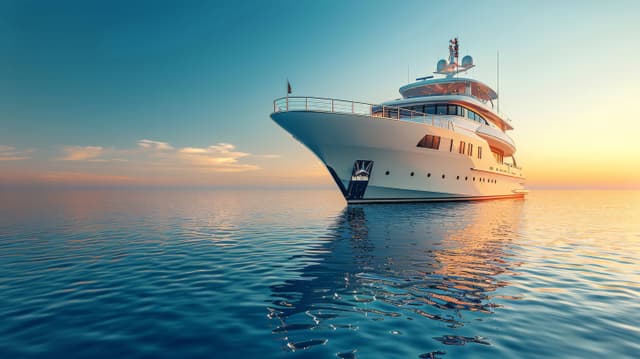Private Jets Personally Owned by Elvis Presley: A Glimpse into the King’s Aviation Legacy

Elvis Presley, the legendary King of Rock 'n' Roll, left an indelible mark not only on the music industry but also in the world of luxury. Among his many opulent possessions were a series of private jets, which became an integral part of his extravagant lifestyle. These jets were more than just a mode of transportation for Elvis; they symbolized his larger-than-life persona and allowed him to traverse the globe in unparalleled comfort and style. In this article, we explore the private jets personally owned by Elvis Presley, shedding light on the aircraft’s features, history, and significance in his life.
Elvis Presley’s Fascination with Aviation
Elvis’s love for flying and aviation began in the 1960s, a time when private air travel was a symbol of ultimate luxury and success. He not only used these jets to transport himself and his entourage on tours but also for personal leisure and family vacations. The private jets owned by Elvis became a hallmark of his lavish lifestyle and reflected his desire for privacy, mobility, and exclusivity.
The Lisa Marie: Elvis’s Most Famous Jet
Of all the private jets owned by Elvis, none is more famous than the Lisa Marie, a customized Convair 880 that he purchased in 1975 for a staggering $250,000. The jet was named after his beloved daughter, Lisa Marie Presley, and became a flying palace in the sky.
Lavish Interiors and Features
The Lisa Marie was not your typical private jet. After its purchase, Elvis spent over $800,000 on interior renovations, transforming it into a luxurious airborne mansion. The aircraft was outfitted with gold-plated seatbelt buckles, suede chairs, walnut paneling, and plush leather upholstery. The lounge area was designed with a crescent-shaped sofa, while a conference room allowed Elvis to conduct business meetings while flying between tour locations.
The Lisa Marie was also equipped with cutting-edge technology for its time, including a state-of-the-art entertainment system, complete with television sets, video players, and a high-quality stereo system. The onboard phone system allowed for in-flight communication, and the master bedroom featured a full-sized bed for long-haul comfort. These extravagant touches made the Lisa Marie one of the most luxurious jets in the world at the time.
The Jet's Legacy and Present-Day Status
Following Elvis's death in 1977, the Lisa Marie was retired and put on display at Graceland, his famous Memphis estate, where it remains a key attraction for Elvis fans and aviation enthusiasts. It continues to be preserved as part of Elvis's larger-than-life legacy, allowing visitors a glimpse into the King’s incredible lifestyle.
Hound Dog II: Elvis’s Second Jet
While the Lisa Marie is the most well-known of Elvis’s private jets, it wasn’t his only aircraft. The Hound Dog II, a Lockheed JetStar, was another iconic plane owned by the King. Elvis purchased this jet in 1975, not long after acquiring the Lisa Marie, as a backup aircraft for shorter trips and more practical travel needs.
Sleeker, but Still Luxurious
The Hound Dog II, though smaller than the Lisa Marie, still boasted luxurious interiors. With seating for nine passengers and a range of 2,500 miles, the JetStar was a more practical choice for Elvis when he needed to make quicker trips across the U.S. Like the Lisa Marie, the Hound Dog II featured high-end finishes and technology, including leather seating and a cutting-edge communication system for its time.
The sleek design of the Lockheed JetStar made it one of the most sought-after jets during the 1970s, and it remains an enduring symbol of mid-century aviation. The Hound Dog II, along with the Lisa Marie, was also preserved at Graceland, contributing to the storied legacy of Elvis’s love for aviation.
The Significance of Private Jets in Elvis’s Life
Elvis’s ownership of these two iconic jets goes beyond their material value—they represented his intense desire for freedom and autonomy, qualities that were becoming increasingly difficult for him to maintain as his fame grew. The jets allowed him to travel privately, away from the prying eyes of fans and media, providing him with much-needed seclusion during the height of his career.
Moreover, these jets served as a mode of transporting not only Elvis but his entire entourage, which included friends, family, and his legendary “Memphis Mafia.” Elvis’s insistence on traveling with his close-knit group reflected his loyalty to those around him, and the private jets enabled him to maintain his close relationships while maintaining a hectic tour schedule.
Private Jets as Symbols of Elvis’s Wealth and Status
Owning a private jet in the 1970s was a symbol of ultimate wealth and success. For Elvis, these jets were not only practical but also a powerful statement of his unparalleled success in the entertainment world. The customization of the Lisa Marie and Hound Dog II reflected his personal style and desire to project an image of prosperity and sophistication.
Where Are Elvis’s Jets Now?
Today, both the Lisa Marie and Hound Dog II are preserved as part of the permanent collection at Graceland, which has become one of the most visited museums in the United States. Thousands of visitors flock to Graceland each year, not only to pay homage to Elvis’s musical legacy but to witness firsthand the grandeur of his private jets. The jets stand as a testament to the King’s impact on pop culture and his incredible wealth and taste.
Conclusion
The private jets personally owned by Elvis Presley remain lasting symbols of his iconic status and lavish lifestyle. The Lisa Marie and Hound Dog II are more than just relics of aviation—they are pieces of history that continue to fascinate both Elvis fans and aviation enthusiasts alike. Through these jets, we gain insight into the grandeur of Elvis’s life, his desire for privacy, and his enduring legacy as the King of Rock ‘n’ Roll.



